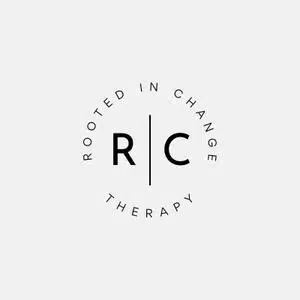Not sure how payday vs. installment loans for therapy compare? This article has you covered.
Maintaining optimal mental health is crucial for overall well-being. Mental health not only influences our emotions and behaviors but also shapes our lives. Accessing high-quality therapy services is a significant step to wellness.
Payday Vs. Installment Loans – Financial Constraints in Accessing Therapy
Despite the benefits of seeking therapy treatment, financial struggles can prevent some people from accessing therapy services. However, given the dangers of not seeking therapy help, nothing should come between you and getting mental help, including financial struggles.
Therapy loans are a possible solution for those who need financial help to cover therapy expenses. While there are many therapy loan options, this article focuses on how payday loans compare to installment therapy loans.
Understanding Payday Loans
Payday loans are short-term, high-interest loans designed to cover immediate financial needs until your next paycheck. They often have minimal eligibility requirements and quick approval processes.
When using payday loans for therapy, you borrow a small amount of money to be repaid in full, along with fees, on your next payday. Since payday loans have a quick turnaround, they can be a perfect option for urgent needs, including paying for therapy.
Here are the costs associated with payday loans:
- Interest rates: While payday loans offer quick financial solutions, they can attract higher annual percentage rates (APRs). Talk to your lender about your loan’s APRs to ensure you know what awaits you to avoid financial surprises.
- Fees: Beyond interest, payday loans may come with additional fees, such as processing fees or late payment penalties. It’s crucial to understand the complete cost structure before you commit.
Risks and Potential Drawbacks of Using Payday Loans for Therapy
Payday loans can be a double-edged sword for therapy expenses.
- Possible debt cycle: The short repayment period can lead to a borrowing cycle.
- High costs: High-interest rates and fees can make payday loans an expensive choice.
- Limited regulation: Some regions have minimal payday regulations, which can expose borrowers to predatory lending practices.
Exploring Installment Loans for Therapy
Installment loans differ from payday loans in their structure—they are repaid over time through scheduled payments or “installments.” They often have more extended repayment periods and may offer more flexibility.
Applying for installment loans for therapy involves a straightforward process – you only need to submit an application detailing your financial situation and therapy needs. After that, lenders will assess your ability to repay. Note: installment lenders consider other factors beyond your next paycheck.
Cost Structure of Installment Loans
- Interest Rates: Installment loans generally have lower interest rates than payday loans. This means the overall cost of borrowing may be more manageable.
- Repayment Terms: The extended repayment terms allow you to spread the cost of therapy over a more extended period. This can make monthly payments more affordable and less likely to cause financial strain.
Evaluating the Risks and Benefits of Installment Loans for Therapy
- Predictable repayment: Installment loans offer a clear and predictable repayment schedule and a better way to budget your therapy expenses.
- Lower risk of debt cycle: Longer repayment terms minimize the risk of falling into a cycle of debt, as with payday loans.
- Potential for lower costs: While installment loans may have lower interest rates—compare the total cost with payday loans to determine the most cost-effective option.
Payday Loans Vs. Installment Loans
Side-by-Side Analysis of the Total Costs Involved in Payday Loans
To get the full picture, let’s break down the costs associated with payday loans:
- Principal amount: The initial sum borrowed for therapy needs.
- Interest charges: High-interest rates can significantly inflate the total repayment amount.
- Additional fees: Payday loans often come with fees like processing charges or penalties for late payments.
- Total repayment: Summing up the principal, interest, and fees provides the total cost of the payday loan.
Example:
Principal Amount: $500
Interest Charges: $150
Additional Fees: $50
Total Repayment: $700
Side-by-Side Analysis of the Total Costs Involved in Installment Loans
Now, let’s dissect the costs associated with installment loans:
- Principal amount: Similar to payday loans, this is the initial borrowed sum for therapy.
- Interest charges: While generally lower than payday loans, interest still contributes to the total cost.
- Repayment terms: The extended period may lead to lower monthly payments, leading to less financial strain.
- Total repayment: Combining the principal, interest, and any additional fees gives the overall cost of the installment loan.
Example:
Principal Amount: $500
Interest Charges: $75
Repayment Terms: 6 months
Monthly Payment: $129
Total Repayment: $774
Factors to Consider When Comparing Payday Vs. Installment Loans
These factors will inform your choice:
- Financial Situation: Evaluate your current financial state, including income, expenses, and existing debts. Assess whether a short-term or more extended repayment plan aligns better with your budget.
- Repayment capacity: Consider your ability to make timely repayments. Calculate the monthly payments for both payday and installment loans to determine what is realistically manageable for you.
- Long-term impact on overall well-being: Look beyond immediate financial needs. Assess how each loan option may impact your overall well-being in the long run.
Tips for Responsible Borrowing and Avoiding Debt Traps
- Only borrow what you need: Resist the temptation to borrow more than necessary. Understand the terms: Carefully read the terms and conditions of the loan. Pay attention to interest rates, fees, and penalties for late payments.
- Create a realistic budget: Develop a budget that includes loan repayments. Ensure that monthly payments are feasible without compromising essential expenses.
- Explore Alternatives: Investigate alternative options for financial assistance or therapy funding, such as non-profit organizations, sliding scale fees with therapists, or community support networks.
- Regularly review your financial situation: Assess your financial situation occasionally and adjust your repayment plan accordingly.
Payday Vs. Installment Loans for Therapy—We Can Help
As you can see, both payday and installment loans have advantages and disadvantages. The best option for you depends on your therapy needs and financial situation.
If you need help choosing the right therapy loan option, LGBTQandAll has resources to guide you. Check our therapy loan resources to learn more about the different options to make an informed choice.















